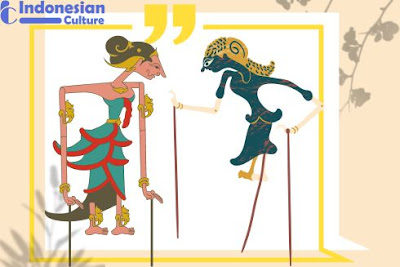
Indonesia is a country with a rich cultural heritage, and one of the most unique and captivating aspects of its culture is wayang, the traditional art of puppetry. Wayang has been a part of Indonesian culture for centuries, and is still widely performed today. In this article, we will explore the world of wayang, its history, its different types, and its significance in Indonesian culture.
1. Introduction to Wayang
Wayang is an Indonesian term for puppet, and it refers to the traditional art of puppetry that originated in Java. Wayang puppetry is a combination of storytelling, music, dance, and puppetry. The puppeteers use puppets made of wood or leather, which are controlled by rods or strings, to enact stories from the Ramayana and Mahabharata, two ancient Hindu epics.
2. History of Wayang
Wayang has a long and rich history in Indonesia. It is believed to have originated in Java during the 10th century, and was initially used for entertainment at royal courts. Over time, wayang evolved into a form of storytelling and was used to educate people about religion and culture. During the Dutch colonial period, wayang was suppressed, but it survived and continued to be performed in rural areas. After Indonesia gained independence, wayang was embraced as a symbol of national identity and became popular throughout the country.
3. Types of Wayang
There are several different types of wayang, each with its own unique characteristics. The two main types are wayang kulit, which uses flat leather puppets, and wayang golek, which uses wooden rod puppets. Wayang kulit is the most popular type of wayang, and is performed mainly in Java and Bali. Wayang golek, on the other hand, is mainly performed in West Java.
Other types of wayang include wayang klitik, which uses thin flat puppets made of cardboard, wayang beber, which uses painted scrolls, and wayang potehi, which uses small puppets made of clay. Each type of wayang has its own distinct style and is used to tell different stories.
4. Significance of Wayang
Wayang is an important part of Indonesian culture and has many meanings. It is not just a form of entertainment, but also a way to educate people about history, religion, and culture. Wayang performances are often held during religious ceremonies and festivals, and are considered to be a form of worship.
In addition to its religious significance, wayang also has social and political significance. During the colonial period, wayang was used to spread anti-colonial messages and to rally support for the independence movement. Today, wayang is often used to comment on current events and social issues.
5. Wayang Performances
Wayang performances are complex and involve many elements, including music, dance, and storytelling. The puppeteers, known as dalang, are highly respected and play multiple roles during the performance. The dalang manipulates the puppets using rods or strings, and also provides voices for the characters.
Wayang performances can last for several hours and are usually held at night. The audience sits in front of the puppet screen, or kelir, and watches as the story unfolds. Wayang performances are highly immersive, and the audience is encouraged to participate by applauding, laughing, and shouting.
6. Challenges Facing Wayang
Despite its popularity and significance, wayang is facing several challenges. One of the main challenges is the declining interest among younger generations. Many young Indonesians are more interested in modern forms of entertainment, and do not appreciate the cultural and historical significance of wayang.
Another challenge facing wayang is the lack of funding. Many puppeteers struggle to make a living from wayang, and there is a shortage of resources for training and preserving the art form. Additionally, wayang is facing competition from other forms of entertainment, both traditional and modern, which can make it difficult for wayang to remain relevant.
Despite these challenges, there are efforts underway to preserve and promote wayang. Many organizations are working to train and support young puppeteers, and there are initiatives to incorporate wayang into school curriculums. In addition, many tourists are drawn to wayang performances, which helps to support the art form financially.
Conclusion
Wayang is a unique and fascinating art form that has played an important role in Indonesian culture for centuries. It is a form of entertainment, education, and worship, and has significant social and political meaning. Although wayang is facing challenges, efforts are being made to preserve and promote it, and it remains an important part of Indonesian culture.
FAQs
What is the origin of wayang?
Answer: Wayang is believed to have originated in Java during the 10th century.
What are the main types of wayang?
Answer: The two main types of wayang are wayang kulit and wayang golek.
What is the significance of wayang in Indonesian culture?
Answer: Wayang is an important part of Indonesian culture and has religious, social, and political significance.
How long do wayang performances usually last?
Answer: Wayang performances can last for several hours.
What are the challenges facing wayang?
Answer: Wayang is facing challenges such as declining interest among younger generations and a lack of funding and resources for training and preservation.

Post a Comment for "The Fascinating World of Wayang: Indonesian Puppetry"